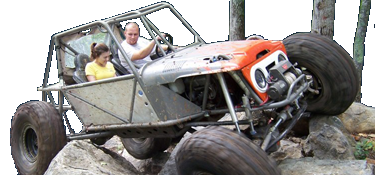RatLabGuy
You look like a monkey and smell like one too
- Joined
- May 18, 2005
- Location
- Churchville, MD
The whole "John Fuller boxed-in control arms" debacle got me thinking.
In most cases, when control arms get bent, what direction is it in? Seems most I've seen has been upwards due to getting hung up and banged on, so the force is upwards with the weight of the vehicle pushing down. But my experience is limited compared to many here.
Square tube is much weaker to bend along the flat side than round tube, however at a 45 so that the force is diagonal across the tube, it is very strong. So IF you were wanting to mostly strengthen along one direction, would it be crazy to use square tube rotated 45 degrees? Adapting the heim to teh ends will be interesting of course

In most cases, when control arms get bent, what direction is it in? Seems most I've seen has been upwards due to getting hung up and banged on, so the force is upwards with the weight of the vehicle pushing down. But my experience is limited compared to many here.
Square tube is much weaker to bend along the flat side than round tube, however at a 45 so that the force is diagonal across the tube, it is very strong. So IF you were wanting to mostly strengthen along one direction, would it be crazy to use square tube rotated 45 degrees? Adapting the heim to teh ends will be interesting of course


